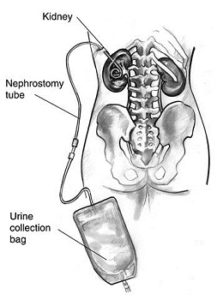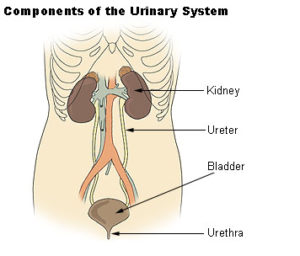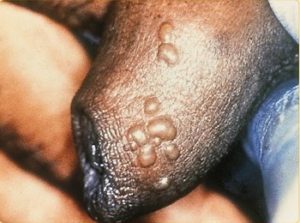Head-to-Toe Assessment: Genitourinary Assessment
Subjective Data |
|
|
|
Focused GU assessment may also include: |
|
| Bladder scan to assess for residual urine volume | Bladder scan according to manufacturer and agency guidelines.
Read this journal article for more information on bladder scanning:
|
| In and out urethral catheter insertion for residual urine volume | Assist the patient to void and catheterize immediately following the attempt. Note the volume of the void and the volume associated with the catheterization. Catheterize as directed by prescriber or as per nurse’s independent scope of practice and agency policy. See Chapter 10.4 Urinary Catheters |
Presence of an ileal conduit (urostomy), nephrostomy
 |
Note amount and character of urine.
Urine via an ileal conduit passes through a piece of bowel, the character of the urine will likely be cloudy from mucous and likely foul smelling from the bacterial that lives in the ileal conduit. See Chapter 11.2 Ostomy Care
|
Potential genito urinary related nursing diagnoses:
|
|
| Data sources: Assessment Skill Checklist, 2014; BCCNP, 2018; Davis, Chrisman, & Walden, 2012; Jarvis, Browne, MacDonald-Jenkins, & Luctkar-Flude, 2014; Perry, Potter, & Ostendorf, 2018; Stephen, Skillen, Day, & Jensen, 2012; Wilson & Giddens, 2013 | |
Order Now


